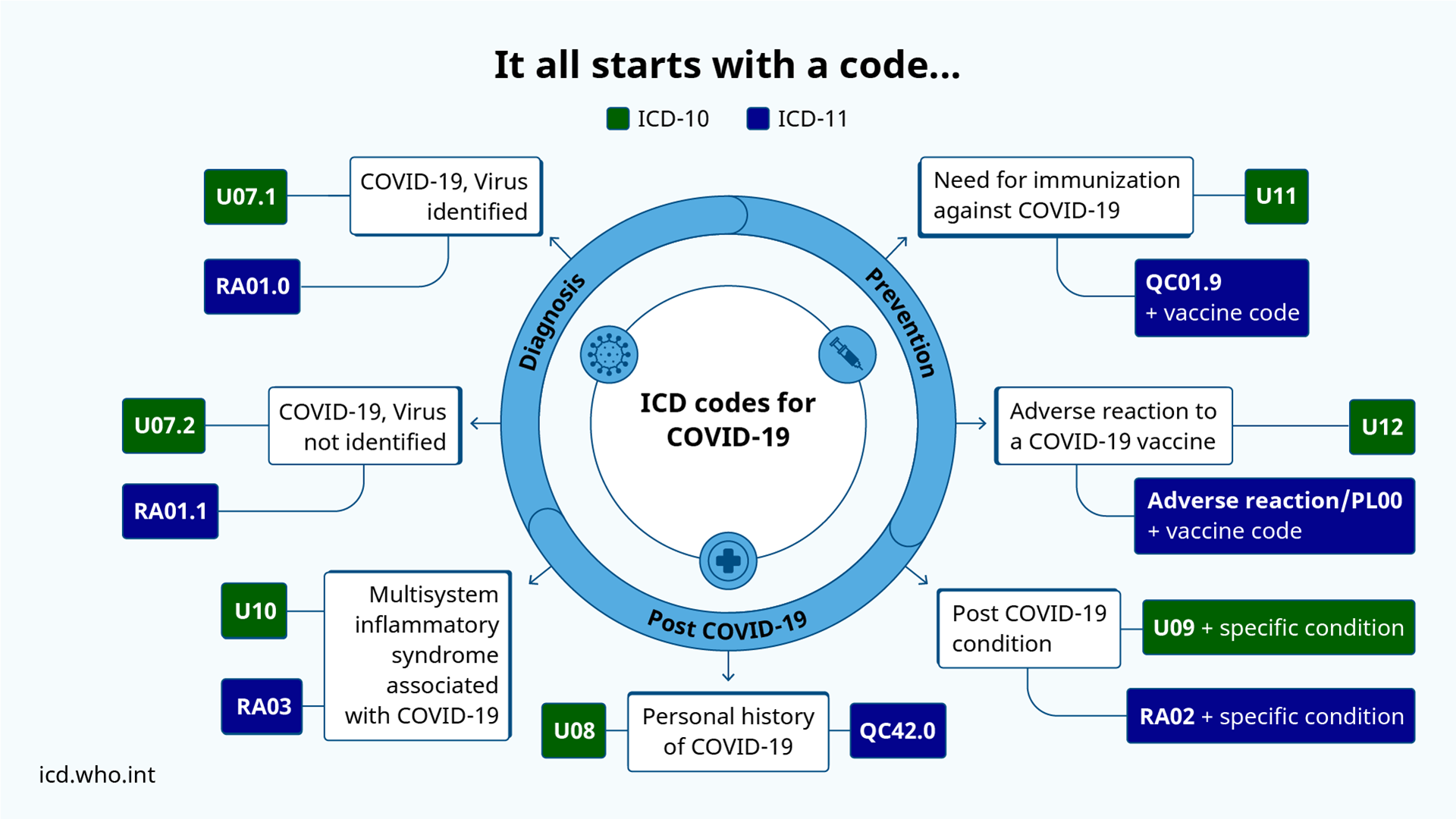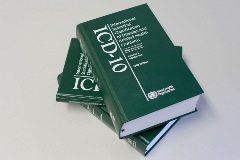Icd 10 Need for Continuation of Care
Section navigation
International Statistical Classification of Diseases and Related Health Problems (ICD)

ICD serves a broad range of uses globally and provides critical knowledge on the extent, causes and consequences of human disease and death worldwide via data that is reported and coded with the ICD. Clinical terms coded with ICD are the main basis for health recording and statistics on disease in primary, secondary and tertiary care, as well as on cause of death certificates. These data and statistics support payment systems, service planning, administration of quality and safety, and health services research. Diagnostic guidance linked to categories of ICD also standardizes data collection and enables large scale research.
For more than a century, the International Classification of Diseases (ICD) has been the basis for comparable statistics on causes of mortality and morbidity between places and over time. Originating in the 19th century, the latest version of the ICD, ICD-11, was adopted by the 72nd World Health Assembly in 2019 and came into effect on 1st January 2022.
Read more

ICD purpose and uses
As a classification and terminology ICD-11:
- allows the systematic recording, analysis, interpretation and comparison of mortality and morbidity data collected in different countries or regions and at different times;
- ensures semantic interoperability and reusability of recorded data for the different use cases beyond mere health statistics, including decision support, resource allocation, reimbursement, guidelines and more.
ICD-11 Highlights
- Legally mandated health data standard (WHO Constitution and Nomenclature Regulations).
- In effect from January 2022.
- Conceptual framework independent of language and culture.
- Integration of terminology and classification.
- End-to-end digital solution (API, tools, online and offline).
- Up-to-date scientific knowledge.
- Comparable statistics and semantic interoperability - for 150 years.
- ICD-11 is accessible to everybody.
- ICD-11 is distributed under Creative Commons Attribution-NoDerivs 3.0 IGO license.
- ICD-11 enables, for the first time, the counting of traditional medicine services and encounters.
- The 11th revision is more extensive and has greater implications for what can be done with the ICD, and how, than any revision since the 6th, in 1948.
ICD-11 use cases
Uses of the ICD are diverse and widespread and much of what is known about the extent, causes and consequences of human disease worldwide relies on use of data classified according to ICD. See below just a few examples:
Certification and reporting of Causes of Death
Information on what people die of is recorded on standard forms, analyzed and reported following ICD standards. The information reliably provides a long-term trend of the health of a population. It also can serve short-term monitoring of epidemiological information, like in an epidemic or pandemic.
Morbidity coding and reporting including Primary care
Accurate and precise information on what people fall sick from and are treated for is recorded and reported with ICD. This includes all levels of health from primary to secondary and tertiary care. This information further serves policy design, planning and monitoring of all aspects of the health of a population.
Casemix and Diagnosis-Related Grouping (DRG)
ICD-coded information is used for resource allocation or lumpsum payments of statistically equal groups.
Assessing and monitoring the safety, efficacy, and quality of care
Quality of care uses ICD-coded information to describe the situation of the patient, outcome of treatment and incidents or near-incidents including mechanisms and involved objects such as the failure of an infusion pump or the accidental wrong dosage of a medicament by the patient in line with the WHO recommendations for patient safety incident reporting and learning systems (page 12).
Cancer registries
Cancer registration provides detailed information over time on cancer patients. Information on the type of cancer, its location, spread and behavior is coded with ICD.
Antimicrobial resistance (AMR)
Researching and performing clinical trials and epidemiological studies
Comparability of coded information in multiple languages and with common diagnostic approaches allows the pooling of information from different sites, both globally and locally, for research and trials. ICD provides all levels of detail required for complete clinical and research documentation across languages, borders and settings.
Assessing functioning
The ability to carry out tasks by oneself and participate in daily life are means by which to describe, in summary, the overall functioning of a person. It can also be used to track the situation in general or before and after treatment. ICD includes a set of functioning categories based on the WHO disability assessment scheme (WHODAS2) that allow users to calculate a functioning score.
Coding traditional medicine conditions
Traditional medicine is an enduring and important area of health care in many countries. To better reflect this reality, ICD-11 includes a supplementary chapter for optional dual coding use, entitled 'Traditional medicine conditions'. ICD-11 enables, for the first time, the counting of traditional medicine services and encounters; the measurement of their form, frequency, effectiveness, safety, quality, outcomes, and cost; comparison with mainstream medicine; and research, due to standardized terms and definitions nationally and internationally. This supplementary chapter is a subclassification for optional use. This chapter is not intended for mortality reporting. Coding should always include also a category from the chapters 1-24 of ICD.
Interoperability standards in WHO Digital Guidelines and for Digital Documentation of COVID-19 Certificates (DDCC)
ICD-11 has combined the updated classification structure with what was formerly the index of ICD. Furthermore, it has systematically redesigned the additional information included in ICD-10 and several of its derivatives in addition to other WHO nomenclatures and terminologies. As a result, ICD-11 has a broad terminological basis that allows users to code clinical terms in records as well as in other documents, such as COVID-19 vaccine certificates. Due to its multilingual design and the controlled translation environment, it is a reliable tool for communication across settings, borders and languages.
ICD-11 webinars
News
ICD Implementation across WHO Member States

Learn more about ICD-11

The global standard for health data, clinical documentation and statistical aggregation.Multiple uses, including primary careThoroughly and scientifically...

Eleventh Revision of the International Statistical Classification of Diseases and Related Health Problems (ICD-11) Digital Version Terms of Use and License...

The latest version of the ICD, ICD-11, was adopted by the 72nd World Health Assembly in 2019 and came into effect on 1st January 2022. ...
ICD-11 an international classification of diseases for the twenty first century
ICD-11 extension codes support detailed clinical abstraction and comprehensive classification
Emergency use ICD codes for COVID-19 disease outbreak

ICD-10

ICD History
First World Health Assembly
Convention of 30 April 1948
The Delegates entrusted WHO, as one of its functions, with the task of establishing and revising the necessary international nomenclatures of diseases and causes of death, giving the World Health Assembly authority to adapt regulations in respect, such as nomenclatures, for consideration and action, the International Statistical Classification of Diseases, Injuries and Causes of Death and accompanying recommendations, destined to improve international uniformity and comparability of statistics of morbidity and mortality.
ICD revisions under the auspices of WHO
| ICD Revision | ICD Coming into effect | ICD Adoption |
| 6th Revision | into effect 1948 | adopted 1948 (WHA1.36) |
| 7th Revision | into effect 1 Jan 1958 | adopted May 1956 (WHА9. 29) |
| 8th Revision | into effect 1 Jan 1968 | adopted May 1966 (WHA19.44) |
| 9th Revision | into effect 1 Jan 1979 | adopted May 1976 (WHA29.34) |
| 10th Revision | into effect 1 Jan 1993 | adopted May 1990 (WHA43.24) |
| 11th Revision | into effect 1 Jan 2022 | adopted May 2019 (WHA72.15) |
kittlesonlathand74.blogspot.com
Source: https://www.who.int/standards/classifications/classification-of-diseases
0 Response to "Icd 10 Need for Continuation of Care"
Post a Comment